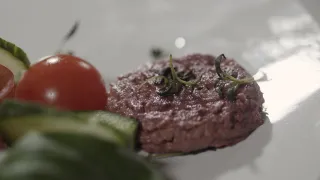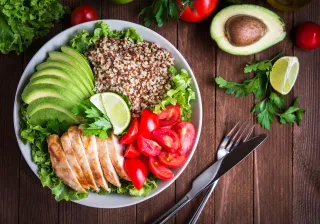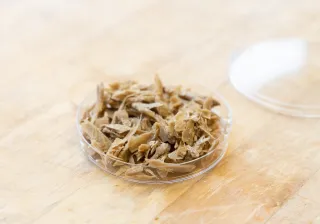There is an ongoing race to develop new meat alternatives. Better methods and products to the existing ones are needed, as current plant-based meat alternatives do not fully satisfy consumers’ taste, texture, and structure expectations. To develop meat alternatives with the characteristics of legacy meat products, a hybrid approach is needed.
The current alternative meat options in the market are only the beginning of a food revolution. While current meat alternatives cost more than animal meat, they fail to imitate meat fully. To produce products that truly satisfy consumer demand, we need a novel approach to the product development of meat alternatives.
Hybrid processing solves the taste and texture challenges
Hybrid processing combines plant and animal ingredients or plant and precision fermentation ingredients to produce new products. These products allow us to reach the majority of consumers who currently prefer animal meat.
When plant-based ingredients, such as pea proteins, are mixed with animal-originated ingredients, such as low-value fish and side streams of the meat industry, we can produce high-value added foods. These foods have similar texture, structure, colour, and taste profiles to legacy meats while providing an environmentally sustainable alternative.
The plant-based meat alternatives on the market use refined ingredients such as protein isolates. As a result, their production costs are higher than their animal counterparts.
VTT’s hybrid processing increases the cost-effectiveness of meat alternatives by using local ingredients and upcycling low-value side streams into high-value added meat alternatives. VTT’s team also focuses on energy and water efficiency from raw materials to final consumer products.
Plant ingredients are essential to developing affordable, nutritious and sustainable meat alternatives
The plant ingredients used in the design of meat alternatives shouldn’t be restricted to soy, wheat and pea proteins. In the EU, there is untapped potential in using local and regional crops, such as fava beans, rapeseed, barley, oats, and sunflower seed. Likewise, sorghum and cowpea are potential ingredients in developing regions such as Africa.
Using local crops to create new meat alternatives
Several regional crops have potential as ingredients for meat alternatives. Fava beans, for example, are a good ingredient as they grow even in colder climates and have a high protein content. If fava beans are included in crop rotation, they feed the soil and increase its nitrogen content, which means they are also good for biodiversity.
Rapeseed and sunflower seed are important oil seeds in Europe. Pressing the oil results in a side stream abundant in protein. The side stream is too valuable to be fed to animals or wasted and could easily be added to alternative meat products to increase their nutritional value.
On the other hand, sorghum, a local African plant, is an excellent example of a plant that could be used in a non-Western context. It is extremely high in protein and has a good digestibility.
Carefully selected animal ingredients enhance meat alternatives
Developing products that resemble traditional meat from plant-based ingredients alone is difficult. However, blending animal and plant ingredients can close the sensory gap.
Meat components such as fat and haemoglobin can also be produced without the animals using precision fermentation technology.
Although precision fermentation might sound like a novel food production technology, it has been an essential part of our everyday food for a long time. For example, it is used in producing rennet enzyme, a critical ingredient in cheese-making and omega fatty acids, a part of our daily supplements.
Precision fermentation can produce high-performance, low-inclusion ingredients, such as aroma components, and food additives, such as colour compounds. It can also be used to enhance the nutritional properties of meat alternatives.
For example, many plant-based meat alternatives on the market contain palm and coconut oils that contain even more saturated fat than legacy meat products. This downside can be avoided by using precision fermentation to produce lipids with the essential fatty acid profiles that give meat its unique taste but with less saturated fat as animal lard, palm oil or coconut oil.
VTT’s expertise helps achieve high-quality meat alternatives
VTT’s knowledge and infrastructure support the development of cutting-edge meat alternatives. Our scientific approach to the development process ensures the validity of the materials, processes, and final products.
We improve the performance of the chosen raw materials by combining innovative processing methods with precision fermentation-based products. We also have expertise in converting raw materials and industrial side streams into valuable products, process optimisation, and innovating new biotechnology approaches.
We’ve developed the hybrid approach as a highly efficient way of developing new meat alternatives. It brings alternative meat products closer to animal-based meat in terms of texture, colour, cooking behaviour, structure and flavour.
Read more about meat alternatives in our handbook.






